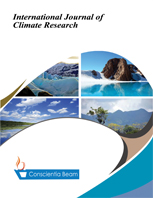Land susceptibility to the stormwater runoff in Nyabugogo river catchment area, Rwanda
DOI:
https://doi.org/10.18488/112.v7i1.3356Abstract
In Rwanda, 40% steep slope land and rapid growing urbanization increase susceptibility of land to stormwater runoff. The objectives were to analyze causal factors of stormwater runoff in the study area, to identify the extent to which the study area is susceptible to stormwater runoff, and to generate stormwater runoff susceptibility map of the study area. The study area is Nyabugogo catchment which crosses the districts of the Eastern Province (Kayonza, Rwamagana, and Gatsibo), the Northern Province districts (Gicumbi and Rulindo), and other districts of Kigali city (Kicukiro, Nyarugenge, and Gasabo districts). The authors employed secondary datasets collected from the United States Geological Survey (USGS), ranging between 2017 and 2020. Six triggering factors: Land Use and Land Cover (LULC), Rainfall, the duration of photosynthetic activity (NDVI), soil texture, Elevation, and the Slope were analyzed. The results indicated that poor land use and land management ranked 36.10%, rainfall 28.70%, and NDVI which ranked 16.40% are the main triggering factors. The results proved that Moderate, High and Very High Susceptibility to storm water runoff at large extent are recorded in Rulindo and Gicumbi districts of Northern Province, a large part of Gasabo and Nyarugenge districts in Kigali City, and parts of Gatsibo and Rwamagana districts, in Eastern province. It was concluded that if Best Management Practices (BMPs) are applied, flooding and erosion along with pollution can be minimized. The policy makers are recommended to consider the prone areas identified by this study and assign them the priority for stormwater runoff management plan.

